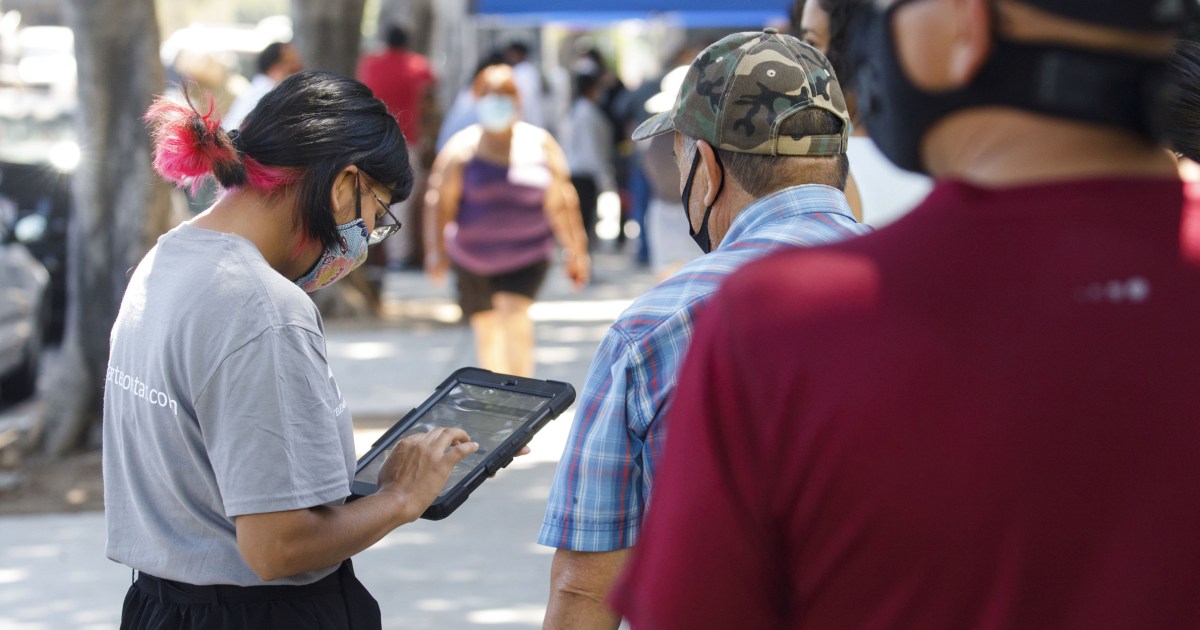Last week the first results of the 2022 Census were released.
"Provisional
" data, as defined by INDEC.
And based on this information, the first two conclusions are that
the City
has had practically the same population since 1947 and that women outnumber the rest of the country's jurisdictions.
But Buenos Aires specialists warn that the information disseminated may not be correct and there are chances that there is an
"underreporting"
.
Regarding the population in general, the census determined that 3,120,612 people live in the City;
which implies a growth of 7.97% compared to the previous edition, that of 2010 (2,890,151).
In addition, Buenos Aires concentrates the highest percentage of the female population, compared to the rest of the jurisdictions.
Thus, at the country level, the percentage was 51.76%;
while in Buenos Aires it was 53.8%.
Where is the "subregistration".
In a conversation with
Clarín,
José María Donati, director of Statistics and Censuses of the City, says that there are several reasons that suggest that the numbers that the Census produced are different from reality.
"On the one hand, because it was decided to take
a census of the residents of villas, poor neighborhoods and settlements
, during one day. For us it is not feasible to carry out a complete sweep in one day. From previous experience, we have carried out surveys for 4 days, two Saturdays and two Sundays in a row," Donati explained.
v1.7 0421
X-ray of the country today
Source:
CENSUS 2022
Infographic:
Clarín
Another of the indications for which he believes that there is an underreporting is
linked to what happened in the pandemic
, in the different stages of calling for
vaccination campaigns.
The Buenos Aires Ministry of Health required the project figures for the number of people, segmented by age, from Statistics and Censuses.
In this way, he could calculate the number of doses needed to move the vaccination forward.
"But
the actual number of people was always higher.
In a colloquial way,
we fell short,
" Donati explained.
Finally, there is another factor that affects and it is
the growth of construction in the City.
"Of course, the conformation of the households changed. Today they have fewer members. However, if we see an overhead photo of the Buenos Aires territory, we will see a very important change that can often make it difficult to
analyze a population that practically did not change in 75 years"
, he evaluated.
This overhead photo that Donati refers to exists and can be seen on the official map of the City.
It has
nine aerial views, from 1940 to 2017.
There are thematic maps on transportation, education, health, tourism, among others;
one of them is "images and photographs".
Especially in communes 1 (the entire Central Area), 4 (La Boca, Barracas, Parque Patricios and Nueva Pompeya), 7 (Flores and Parque Chacabuco) and 8 (Villa Soldati, Villa Riachuelo, Villa Lugano
) it was striking that the population remained with little change.
These communes concentrate some of the most densely populated poor neighborhoods, villas and settlements in the City, such as 31 (Barrio Padre Mugica, in Retiro), 1.11.14 (Barrio Padre Ricciardelli, on the border between Flores and Nueva Pompeya) or the 21.24 of Barracas.
Life expectancy
In general terms, there are two components that explain the growth, or not, of the population.
One natural (the difference between births and deaths) and another migratory (the difference between the number of people who immigrate or emigrate).
"This process is reflected in
the structure of the population based on the distribution by sex and age
. And the quintessential graphic appreciation of the structure is the population pyramid," they detail in Statistics.
And the pyramid in Buenos Aires has a narrow base and a wide top, "which speaks of an
aging population
due to a low birth rate and an
increase in life expectancy at birth
," the experts conclude.
Even without having more complete data from the 2022 Census, and according to an analysis by the Buenos Aires General Directorate of Statistics on data from the 2010 Census, life expectancy in the City was
74.1 years for men and 80, 1 years for women.
This explains, in part,
the feminization of the City
: the gain in years of life favors women.
Another piece of information is the decrease in the fertility rate, that is, how many children each woman has.
Updated data is also awaited, but to have an idea: in 2018, the Directorate compared the statistics with those of 1990. In those 28 years, the average age at which women had children
went from 28.5 years to 31.3 .
And the rate of children per woman dropped from 2.08 to 1.53.
Are there more people than the Census says?
Going back to the population in general, is it possible to determine how many men and women could make up the underreporting that the City fears?
The Renaper (the National Registry of Persons) could be a source of information.
Donati explains: "There are countries that already implement it. Here, we should first have a
"law of domicile"
. That is not just another piece of information, that you cannot change your residence address without any supporting documentation. With a correct update of this registry, practically
no censuses would be needed, which implies a huge operation
, not only of people on the street but also of resources," he explained.
In Estonia, for example, the Census is digital and takes place over several months.
One piece of information that the jurisdictions eagerly await is that of
the population by age group.
It is very basic information that nevertheless provides a lot of data.
For example, in the active population group (those between 18 and 65 years of age), the analysis makes it possible to determine employment rates.
Other vital data is also missing, what Donati describes as "micro data."
And they could explain if the Census was done right or if mistakes were made.
It is the information about the radii into which the City was divided and the 300 homes that fit in these radii.
In some areas, census takers had to
walk a long way to survey 300 homes,
for example in Soldati or Lugano;
and in Palermo or Caballito, perhaps these 300 homes were in just one block.
Beyond territorial occupation, jurisdictions need the data to move forward with the processing that is ultimately used for public policy.
SC
look also
2022 Census: the City is the district with the highest percentage of female population
2022 Census: the population of the City increased by 8% and Caballito and Palermo were the neighborhoods that grew the most



/cloudfront-eu-central-1.images.arcpublishing.com/prisa/BB42X2XT2TTKOOJOSBUIXZRQRE.jpg)


/cloudfront-eu-central-1.images.arcpublishing.com/prisa/GBWIYLSXOZDHXNUL2C66JANTE4.jpg)
/cloudfront-eu-central-1.images.arcpublishing.com/prisa/JK7LV3IVJ56DPOCMYQWVOSSIS4.jpg)

